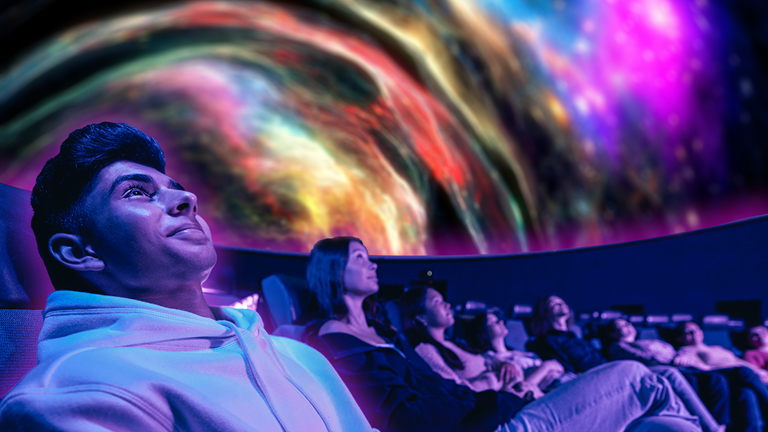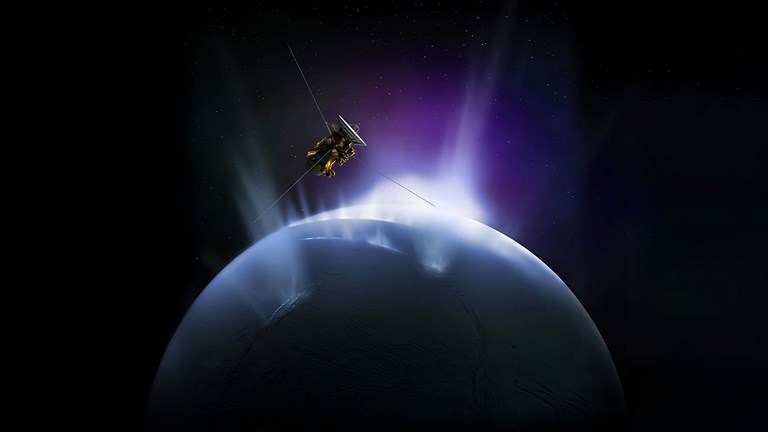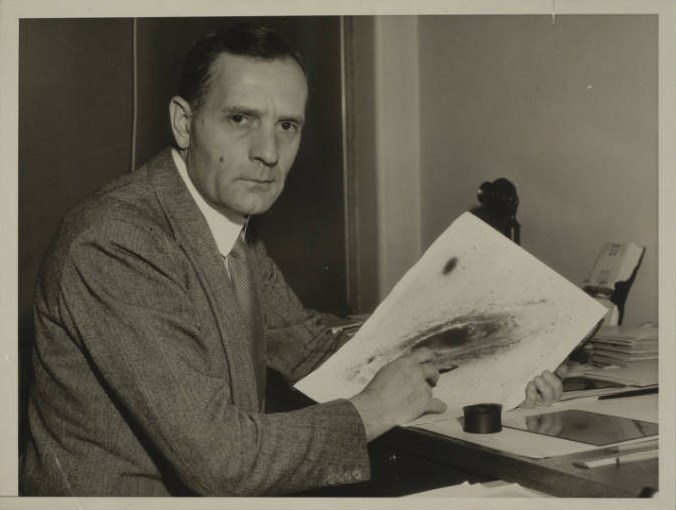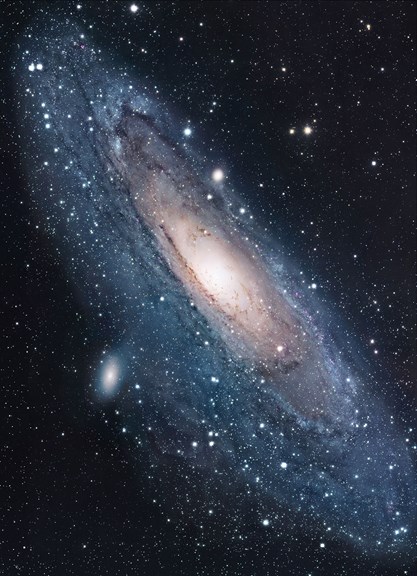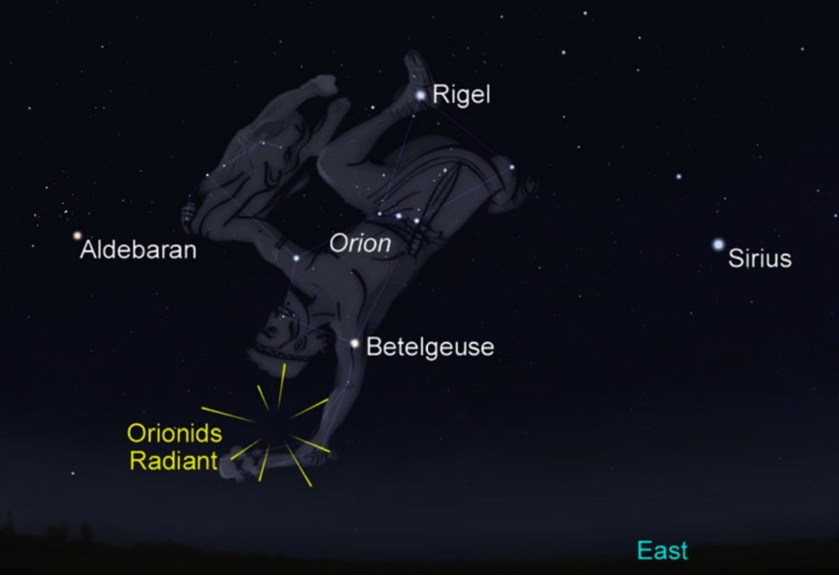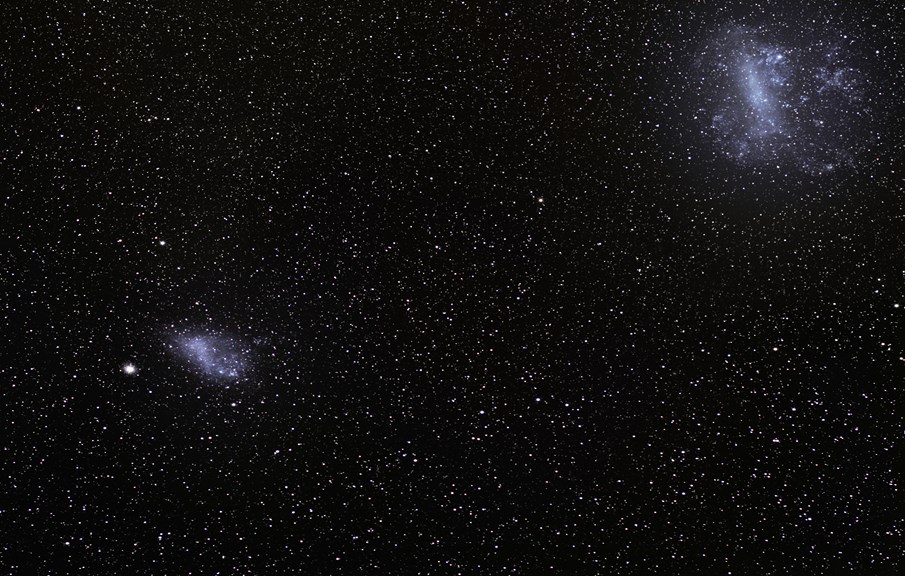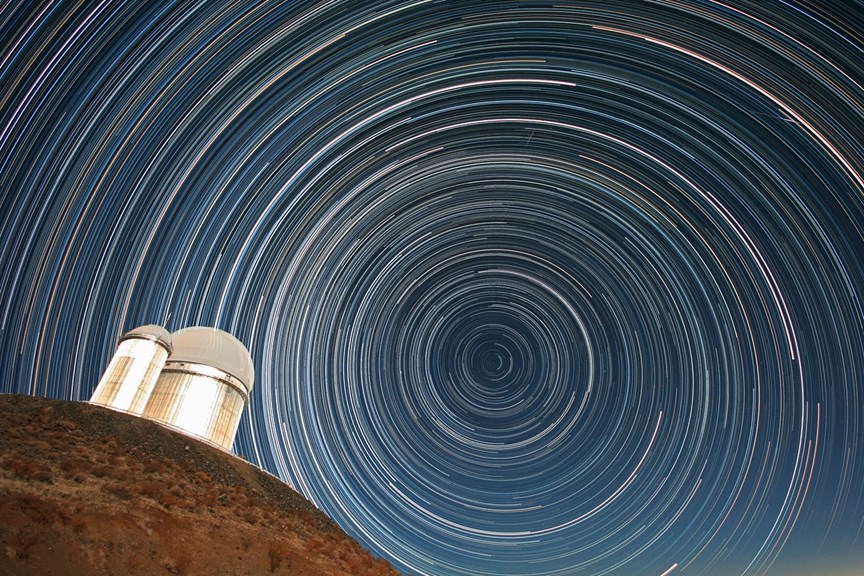Skynotes: October 2023
Upcoming events
One hundred years ago our galaxy was suddenly not alone
In 1923 on the night of 5/6 October, the universe became much larger than previously thought. American astronomer Edwin Hubble was searching the then Andromeda Nebula for a special kind of star known as a Cepheid variable, one that regularly pulsates in brightness. If one or more could be seen then the distance to Andromeda could be known. Was it part of our galaxy or much further away? Was it another galaxy entirely?
The first variable star Delta Cephei was observed by John Goodricke in 1784 in the constellation of Cepheus but distances to far off stars were then not well known. Cepheid stars would later provide a way to determine true distances. They have the same average light output (luminosity) but will be seen with different brightness at different distances. It was not until 1912 that Henrietta Swan Leavitt, examining data of stars observed in the Small Magellanic Cloud, was able to show that how long these stars take to pulsate is related closely to how much they brighten.
Allowing for distance, it was then possible to calculate how far away Cepheid stars are and the objects they sit within. Leavitt’s painstaking work and insight proved the key to establishing one of the most useful tools in cosmic measurement.
In 1923, using the 100-inch Mt Wilson Telescope in California which gave unprecedented magnification and detail, and building on Leavitt’s work, Hubble examined photographic plates of the Andromeda Nebula and observed a star changing brightness according to ‘Leavitt’s Law’. As a Cepheid its intrinsic luminosity could be known, and by comparing its apparent magnitude as captured on the plate, the distance to it and Andromeda itself could be determined. The nebula became a galaxy at almost 1 million light years – a startling result then and calculated now to be 2.5 million. Hubble also examined Cepheids in the Triangulum Nebula to reveal it too was a galaxy at around 3 million light years.
One hundred years ago this month, the universe became much larger and the Milky Way most definitely not alone.
Learn more
- NASA – Edwin Hubble Story and ATNF – Edwin Hubble
- Scientific Women – Henrietta Swan Leavitt
- Harvard Smithsonian – Remembering Henrietta Swan Leavitt
- Smithsonian Learning - Henrietta Swan Leavitt Resources
Melbourne Sun times1
| Date | Rise | Set | Day length | Solar noon2 |
|---|---|---|---|---|
| Sunday 1st | 6:56am | 7:23pm | 12:27 hours | 1:10pm |
| Wednesday 11th | 6:41am | 7:33pm | 12:51 hours | 1:07pm |
| Saturday 21st | 6:27am | 7:42pm | 13:15 hours | 1:04pm |
| Tuesday 31st | 6:15am | 7:53pm | 13:37 hours | 1:03pm |
1Australian Eastern Daylight Time (AEDT) begins at 2am on Sunday 1st.
2When the sun is at its highest, crossing the meridian or local longitude.
Moon phases
| Phase | Date |
|---|---|
| Third Quarter | Saturday 7th |
| New Moon | Sunday 15th |
| First Quarter | Sunday 22nd |
| Full Moon | Sunday 29th |
Moon distances
Lunar apogee (furthest from Earth) is on Friday 10th at 405,426 km.
Lunar perigee (closest to Earth) is on Sunday 26th at 364,872 km.
Planets
Mercury is not visible this month as it is too close to the sun. Its orbit is about to take it behind the sun.
Venus is the ‘morning star’ this month rising in the east around 4.30am before fading view as dawn approaches.
Mars is becoming increasingly difficult to spot as it is close to the sun and will disappear totally as it moves behind the sun.
Jupiter is bright and easily seen this month rising from 10.30pm and moving across the northern and north-western sky before being lost in the early morning light.
Saturn can be seen from 8pm in the north-east at dusk and will travel through the north before setting in the west around 4am early in the month, and 3am by end of October.
Meteors
The Orionids appear from the 15th-29th but peak on the 21st-22nd with perhaps 30 meteors per hour from midnight until dawn. Centred on Orion near the red supergiant star Betelgeuse, they are typically very fast and bright entering the atmosphere at 66 km per second and vaporising 100 km above the surface leaving persistent trails. The Conversation article by Dr Tanya Hill and Professor Jonti Horner explains the meteor shower in detail.
The Orionids shower was first recorded by the Chinese in 288 AD and is associated with Comet Halley. In 1705, Edmund Halley after studying records of some comets that seemed to re-occur, used Isaac Newton’s new laws of motion to calculate the comet’s orbit predicting a return in 1758 (which he did not live to see).
Orbiting every 75 years, Comet Halley passes through the inner solar system leaving a trail of particles for Earth to pass through twice a year, We witness those meteor showers as the Eta Aquarids in April-May and the Orionids in October.
Learn more
Stars and constellations
In the north
As the year progresses we see Aquila (the Eagle) and its principal star Altair (Alpha Aquilae) directly north but Lyra (the Lyre) and its bright star Vega (Alpha Lyrae) have left our northern skies this month.
In the west
Scorpius is now moving down to the west with the red-giant star Antares the middle of three stars that mark the scorpion’s body. High above following the scorpion is the asterism ‘the teapot’ which gives you the position of the bow and arrow held by the centaur Sagittarius.
In the east
Formalhaut in Piscis Austrinus (Southern Fish) is the bright evening star in the east this month. But as spring ends and we move towards summer we will progressively begin to see from the north-east around to the south-east the beautiful Pleiades cluster, Taurus the bull and Aldebaran, Orion the hunter with the ‘saucepan’ and Betelgeuse, and Canis Major and Sirius.
In the south
In a dark sky in the south-east are the isolated Large and Small Clouds of Magellan (our galaxy’s nearest neighbours) as well as the vast band of billions of stars and dark dust clouds that make up what we can see of our own galaxy, the Milky Way. In the evenings this month it runs in a broad arc from south to north. From our location about 28,000 light years from the centre of our disc shaped galaxy we have an edge-on view along the plane of the galaxy where the density of stars is greatest. As you look away from the Milky Way to either side of the sky you see far fewer stars. In those directions you are peering through only a thousand or so light years out into intergalactic space, to the north or to the south of the galactic plane. Where we are in the galaxy and its size and shape was not fully understood until quite recently.
Low in the south-west are the Pointers, Alpha and Beta Centauri, in the constellation of Centaurus (the other centaur in our night skies). Following the line of the two bright Pointers lower to the horizon leads to the small but famous Crux (Southern Cross). Crux and the Pointers are among many southern hemisphere stars that are circumpolar - from our southern latitude they trace curving paths through the night and are always above the horizon.
Circumpolar means ‘around the pole’
As our planet rotates some stars rise in the east and set in the west during the night – that’s diurnal motion, the daily turning of the Earth. It is the same reason why the moon, the planets and the Sun all appear to rise in the east and set in the west. But stars that are far enough south (or far enough north in the northern hemisphere) take half-circle paths during the night remaining above the local horizon at all times. They never set and complete their circular journey during daytime when they can’t be seen.
However, there are two extremes of this ‘around the pole’ motion. At the south pole’s months-long winter no stars rise or set, all remain above the horizon, all are circumpolar. But, at the equator stars are all seen to rise and set during the night, none are circumpolar.
A fixed camera set for a long exposure can record trails of stars making curving paths across the sky during the night. Such paths are centred around the South Celestial Pole (SCP), the point around which the stars appear to turn as Earth rotates. The SCP represents the position in the southern sky our planet’s axis of rotation points to. At the South Pole which is latitude 90 degrees south it would be above at the zenith (the point above your head), but from Melbourne’s latitude of 38 degrees south the SCP sits 38 degrees above the southern horizon (which is 52 degrees away from the zenith).
Learn more
International Space Station
At a distance of about 400km the ISS completes an orbit every 90 minutes and appears as a bright point slowly moving across the night sky. Here are some of the brightest passes expected this month over Melbourne:
Morning
Tuesday 12th, 5:01am to 5:08am North-West to North-East
Evening
Wednesday 13th, 8:50pm to 8:55pm North-North-West to East-South-East
Monday 16th, 8:01pm to 8:08pm North-West to South-East
Monday 30th, 9:31pm to 9:35pm South-West to North-North-West
Heavens Above gives predictions for visible passes of space stations and major satellites, live sky views and 3D visualisations. Be sure to first enter your location under ‘Configuration’.
On this day
3rd 1942, first object to reach space, the experimental V2 (‘Vengeance’) rocket, was launched from Peenemünde, Germany in a brief flight over the Baltic.
4th 1957, Sputnik (USSR) was launched to become the first artificial satellite.
4th 2004, SpaceShipOne was launched as the first private spacecraft into space.
5th 1923, Edwin Hubble (USA) established that M31, the Andromeda Galaxy, is separate to our own Milky Way Galaxy.
7th 1959, first photos of the moon’s far side are taken by Luna 3 (USSR).
9th 1604, a Type1A supernova 20,000 light years away in constellation Ophiucus is visible from Earth, and on 17th Johannes Kepler observes and publishes his account of the new star. It is the most recent supernova visible to the naked eye in our galaxy.
10th 1967, the United Nations’ Outer Space Treaty on the peaceful exploration and use of space was established. By now 109 nations are signatories and several other agreements and conventions have been created to cover space law.
11th 1958, Pioneer 1 (USA), a battery-powered probe aiming for lunar orbit, fails to reach escape velocity and burns up.
11th 1968, first crewed Apollo mission, Apollo 7 (USA), launched into Earth orbit in test of Saturn V rocket and Command and Service Module (CSM).
12th 1964, USSR’s Voskhod 1 (‘Sunrise’) was the first spacecraft with a crew of more than one. In this case, three cosmonauts who orbited for 41 hours.
13th 1773, the Whirlpool Galaxy M51a, 31 million light years away in constellation of Canes Venatica, is discovered by astronomer Charles Messier.
18th 1967, Venera 4 (USSR) is the first probe to analyse the atmosphere of another planet when it does so at Venus.
19th 1910, birth of Subrahmanyan Chandrasekhar who had major insights into stellar evolution and black holes.
24th 1998, Deep Space 1 (USA) probe was launched to test innovative technologies, including an ion engine, while visiting Asteroid Braille and Comet Borrelly.
27th1994, first sub-stellar object orbiting a star is found, a brown dwarf at Gliese 229.
29th 1991, Galileo probe (USA) is the first to visit an asteroid, Gaspra 951, on its way to Jupiter.
31st 2000, Expedition 1, first resident crew of the International Space Station, arrived by a Russian Soyuz craft for a 136 day stay lasting until March 2001. The three-person crew (one American and two Russians) made the station fully operational, hosted three visiting US Space Shuttles, and received two Russian Progress supply vehicles.
